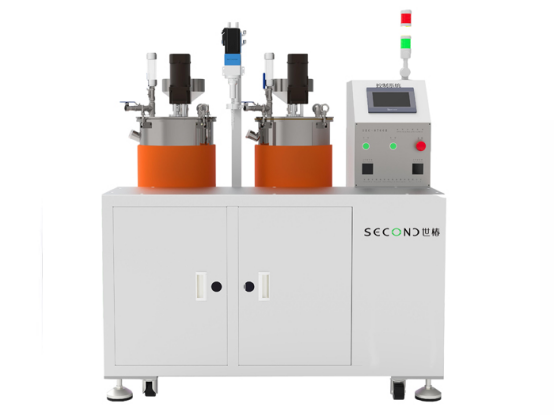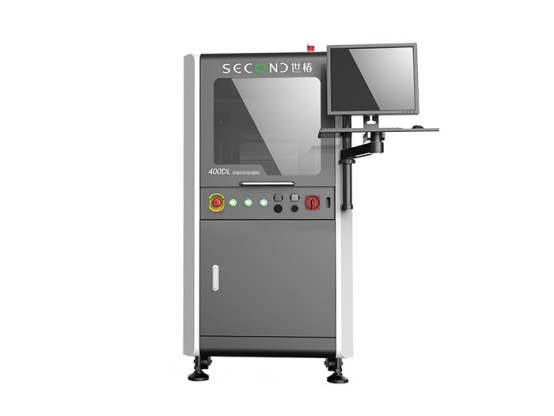The difference between a two-component potting machine and a single-component glue dispensing machine?What are the scenarios for each?
In modern industrial production, glue is widely used in many fields, from electronic appliances, automobile manufacturing to handicraft processing, all of which rely on precise gluing technology. As key equipment for realizing this technology, two-component glue potting machines and single-component glue dispensing machines each have unique characteristics and applicable scenarios. A deep understanding of their differences and applicability is crucial for companies to choose appropriate equipment, improve production efficiency and product quality.
1.The core difference between two-component glue dispenser and single-component glue dispenser
(I) Glue ratio and composition
- Single-component glue dispenser: As the name suggests, the glue used is a single component. This glue can usually be gradually cured at room temperature by absorbing moisture or other active substances in the air, without the need for additional mixing operations. For example, the common instant glue is a single-component glue. During its use, the glue dispenser only needs to apply the glue accurately to the specified position according to the set program.
- two component dispensing systems: It needs to handle two different components of glue. The two glues must be mixed in a strict ratio before use to react chemically and solidify. For example, epoxy resin glue is usually composed of resin and curing agent. The two-component glue dispenser can accurately control the mixing ratio of the two to ensure that the performance of the glue is optimal.
Two component glue dispensing potting machine SEC-S8700-E
Second Intelligent glue potting machine SEC-S8700-E is a two-component glue potting machine, which is compact and functional, flexible in manual operation, and Super cost-effective. The metering motor of this equipment is precisely controlled by PLC to achieve accurate proportioning, automatic mixing, and automatic quantitative dispensing of two-component glue. It has functions such as vacuum feeding, vacuum degassing, heating, stirring, and automatic cleaning, and can cope with various complex gluing environments; it adopts a unique industrial design, with a generous appearance, compact structure, stable operating system, friendly operating interface, and high cost-effective.
(II) Equipment structure and working principle
- Single-component glue dispenser: The structure is relatively simple, mainly consisting of a glue storage tank, a pneumatic or electric drive device, a glue dispensing controller, and a glue dispensing needle. When working, the piston is pushed by air pressure or motor to squeeze the glue out of the storage tank and reach the working surface through the dispensing needle. Its operating principle is similar to that of an ordinary glue gun, but it has more precise control and automation functions.
- Two-component glue dispenser: In addition to the glue storage and delivery system similar to the single-component glue dispenser, a complex mixing system is added. The system usually includes a precision metering pump, a static mixer or a dynamic stirring device to ensure that the two glues can be evenly mixed. During the working process, the two glues are extracted from their respective storage tanks, metered, and enter the mixer according to the set ratio. After being fully mixed, they are poured into the product.
(III) Precision and flow control
- Single-component glue dispenser: In terms of flow control, it is mainly achieved by adjusting the air pressure, glue dispensing time or motor speed. Its precision is relatively low, but it can meet the needs of some single-component adhesive application scenarios that do not require particularly strict glue dosage, such as fixing ordinary electronic components and pasting small crafts. Generally speaking, the flow control error of a single-component glue dispenser may be between 0.015mm – 0.025mm.
- Two-component potting machine: Since it involves the precise mixing of two glues, the requirements for flow control are higher. It uses advanced metering technology and control systems to achieve high-precision glue ratio mixing and flow control. For example, some high-end two-component glue dispensers can control the glue ratio error between ±1%-2%, and the flow control accuracy can also reach a high level, ensuring the consistency of glue dispensing and the stability of product quality.
(IV) Applicable glue characteristics
- Single-component glue dispenser: Applicable to various single-component glues that cure at room temperature, such as UV curing glue, anaerobic glue, hot melt glue, etc. The characteristics of these glues are that the curing method is relatively simple, and no complicated mixing process is required. They can be cured under specific conditions (such as light, contact with air, heating, etc.).
- Two-component glue potting machine: It is specially used to process two-component glues, such as epoxy resin, polyurethane, silicone, etc. This type of glue will undergo a chemical reaction and cure after mixing. It has good properties such as bonding strength, weather resistance and chemical stability, but it requires precise mixing ratios and conditions to achieve the best results.
2.Applicable scenarios of two-component glue pottingmachine and single-component glue dispensing machine
- Applicable scenarios of single-component glue dispensing machine
- Electronic and electrical industry: In the production of circuit boards, single-component glue dispensing machines are often used for fixing, sealing and insulating components. For example, small electronic components are fixed on circuit boards, glue is dispensed using single-component UV curing glue, and then quickly cured under ultraviolet light to improve production efficiency. At the same time, in the assembly of the shells of some electronic products, single-component hot melt adhesive can be used for edge sealing to prevent dust and moisture from entering.
- Lighting industry: For the manufacture of LED lamps, single-component glue dispensing machines can be used for fixing LED chips and applying phosphors. In the LED packaging process, the chip is fixed on the bracket, and the amount and position of the glue are precisely controlled by the glue dispensing machine to ensure the stability and optical performance of the chip. In addition, in the assembly of lamps, single-component sealants can be used to seal the lampshade and the lamp body to improve the waterproof and dustproof performance of the lamp.
- Crafts processing: In the fields of jewelry making and ceramic crafts, single-component glue dispensers can be used for gemstone inlay and ceramic parts bonding. For example, using instant glue to fix gemstones on brackets, or splicing ceramic fragments into complete crafts, the precise control of single-component glue dispensers can achieve fine process requirements while avoiding glue overflow and affecting the appearance.
Automatic In-line PCB Glue Dispensing Machine SEC-DH400L With CCD Visual
Second Intelligent In-line Glue Dispensing Machine SEC-DH400L adopts an integrated mineral casting design, with ultra-high precision and super stability, powerful expansion capabilities, and can realize ion cleaning, dispensing, detection, UV exposure and other functions;
Adopting a gantry structure, it can bear large loads, stable structure, and a powerful CCD visual positioning system, which can meet the requirements of Mark point positioning, edge positioning, and 3D scanning positioning; strong scalability, and can expand AOI detection 3D detection, UV exposure curing and other functions;
Strong platform compatibility, contact and non-contact dispensing, single-head and multi-head synchronous dispensing, automatic compensation and adjustment of double-head spacing, five-axis dispensing function based on needle A/R displacement, etc.
(II) Applicable scenarios of two-component glue dispensers
- Automobile manufacturing industry: Sealing and sound insulation of automobile bodies is one of the important application areas of two-component glue dispensers. For example, in the installation of sealing strips on doors, windows and other parts, the use of two-component polyurethane glue for potting can effectively prevent the intrusion of rain, wind noise and dust, and improve the comfort and safety of the car. In addition, in the casting process of automobile engines, chassis and other parts, two-component epoxy resin glue is often used for bonding and defect repair of sand cores to ensure the quality and performance of castings.
- New energy industry: In the production of lithium batteries, two-component glue potting machinecan be used for packaging and heat dissipation of battery modules. By pouring two-component organic silicone, the battery core is encapsulated together to provide good insulation, moisture-proof and shock-resistant performance, while helping the heat dissipation of the battery, improving the battery’s service life and safety. In the manufacture of solar photovoltaic panels, two-component glue pottingmachines can also be used to seal and protect photovoltaic modules to prevent damage to photovoltaic cells by water vapor, ultraviolet rays, etc., and improve the power generation efficiency and reliability of photovoltaic panels.
- Mechanical equipment manufacturing: For some key components of large mechanical equipment, such as gear boxes, hydraulic cylinders, etc., two-component glue pouring machines can be used for sealing and reinforcement. Pouring two-component epoxy resin glue can fill the gaps of components to prevent lubricating oil leakage, while enhancing the structural strength of components and improving the overall performance and service life of the equipment. In the anti-corrosion treatment of metal structures, two-component polyurea glue can be sprayed or poured by a hot melt dispensing equipment to form a dense anti-corrosion coating, effectively protecting the metal surface from corrosion.
In summary, there are obvious differences between two-component glue potting machines and single-component glue dispensing machines in terms of glue ratio, equipment structure, precision control, and applicable glue, and each has its own unique advantages in different industries and application scenarios. When choosing equipment, enterprises should consider their own production needs, glue types, process requirements, budget and other factors to ensure that they choose the most suitable adhesive equipment, thereby improving production efficiency, ensuring product quality, and standing out in the fierce market competition.
Second Intelligent has played an important role in theresearch, development, manufacturing, pre-sales and after-sales services of fluid dispensing robot, potting and coating solutions which range from various types of automatic fluid dispensing, potting, two-component potting machines and coating machines with desktop, free-standing, inline or cobot combined systems, and widely used in global electrical, electronics, home appliances, automobile, telecom, pharmaceutical, automotive electronics, semiconductor, aerospace, LED and more.



